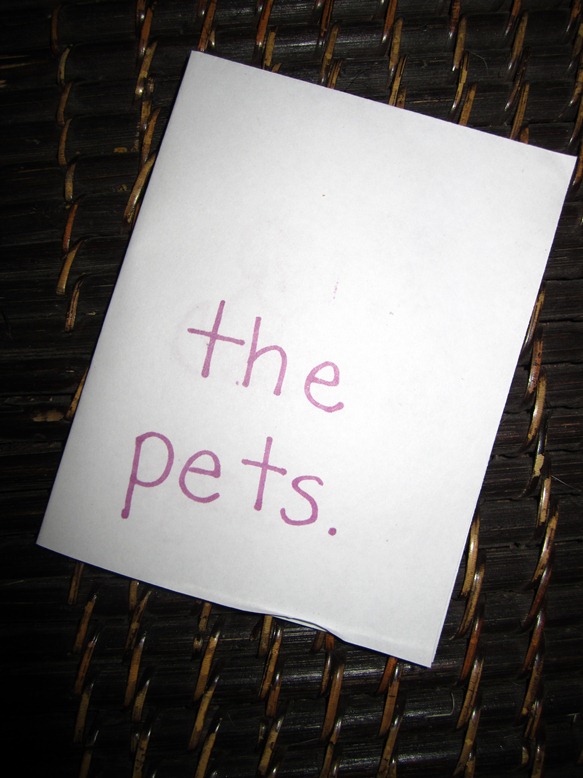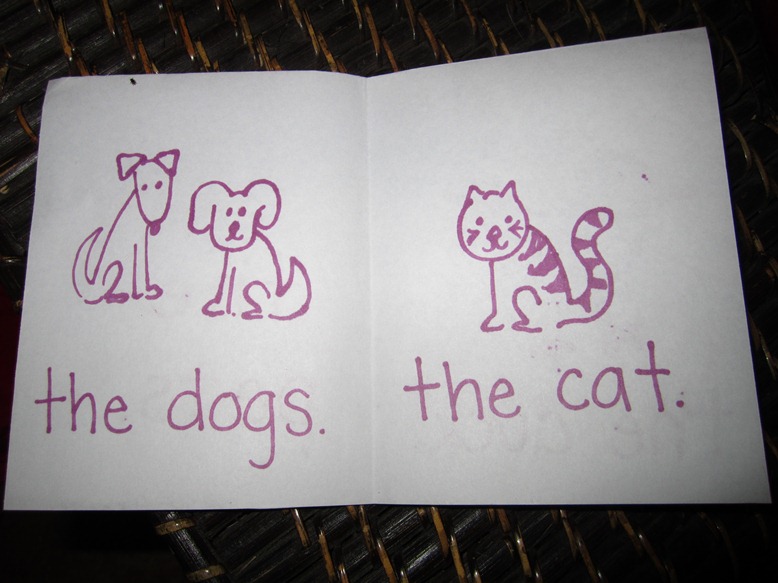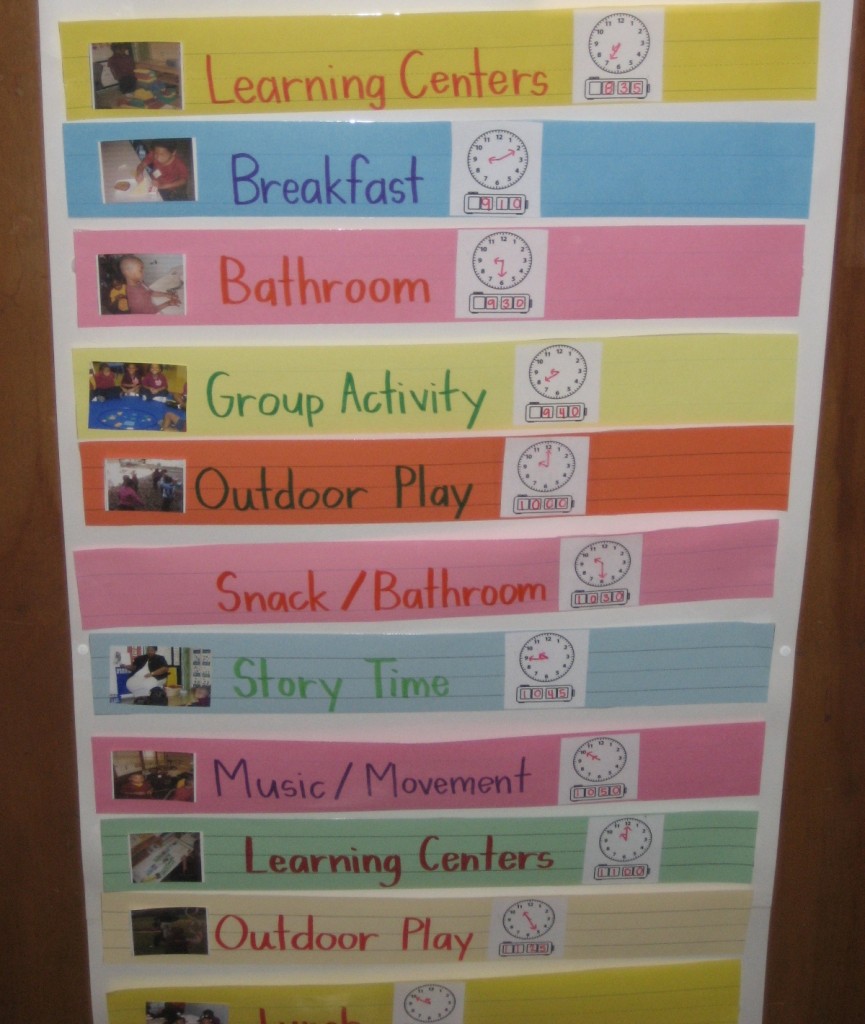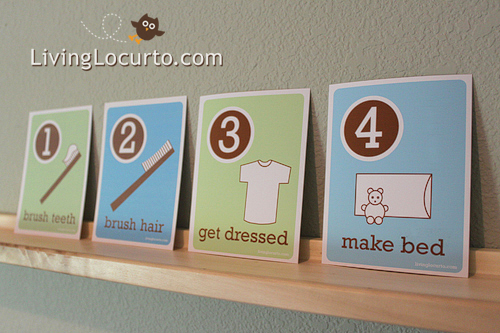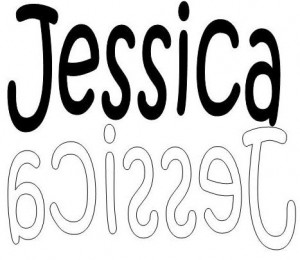If your little one knows ALL of their letters, upper and lower, and has demonstrated a lot of the reading skills that shows you that he/she is ready for books, then you can actually start making books and teaching him/her “sight words.” Sight words are common words in books that you want your little ones to know at first sight. I called them “heart” words because I told the kids I wanted them to know the words by heart. Whatever you call them, you can start teaching your little ones words to memorize and then give your little one practice by reading the new word in a SIMPLE book.
Here is what I mean by a SIMPLE book:
The book will only have about two words per page. The first word will be the same on EVERY page, and the second will be the word for the picture on the page.
So your first page might say “The cat” with a picture of a cat, and then “The dog” on the next page with a picture of a dog.
This is so that you can teach your little one the word “the” before you read the book and then ask them to figure out what the next word on the page is using some clues:
What sound does the word start with? What word tells about the picture? Does the word make sense with the theme of the book? (animals, pets, etc)
Casey with Kidspired Creations shared the book that she made with her son called “The Pets.”
Her son is reading the word “the” and sounding out the second word, but not all children will be able to sound out the second word just yet. That skill is a product of practicing other reading skills.
Here is the book that Casey made:
And here is her description of the book:
“The Pets.
the dogs.
the cat.
the frog.
the pig.
the bug.
the duck.
the pets.
CVC words, sight word “the”, 2 plural words and one “ck”, /k/ sound.”
For More on Mini Book Reading Readiness, Read:
When Can I Start With Little Books

